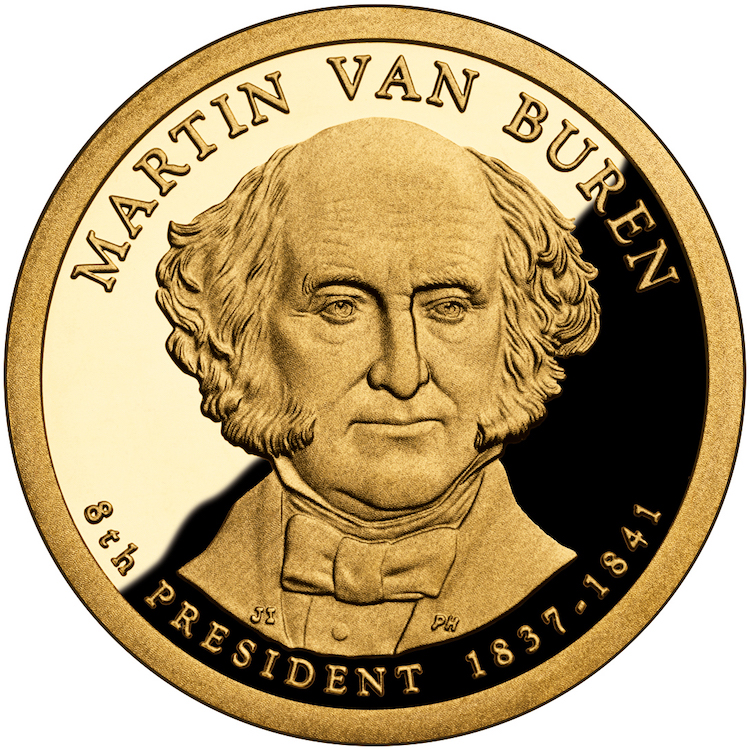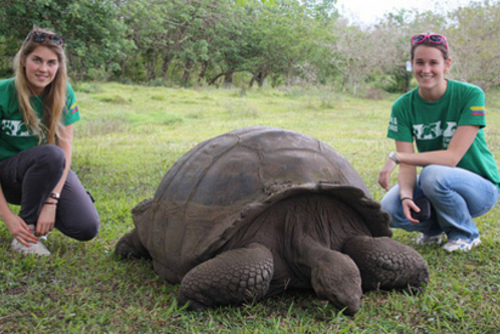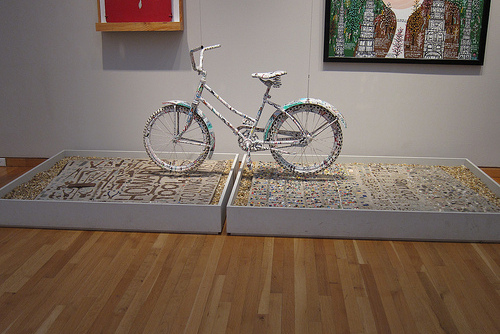While you can use these coins to cover their face value, many sell to collectors for $3 or more. Most seek a Martin Van Buren coin in near-perfect condition, but the finest examples can sell for $300 or more depending on some key details.
Coin value is constantly changing, but understanding the details that fuel the value can help you determine the worth of your coin. Keep reading to learn more about the Martin Van Buren dollar and what might make yours particularly valuable.
Â
How Much is a Martin Van Buren Dollar Coin Worth?
As a commemorative coin, the Martin Van Buren dollar is usually worth more than its face value. This excludes any coins that somehow ended up in circulation, but most others are worth at least $3.
Mint Mark - General Value
- 2008 P Martin Van Buren Dollar $3 to $55
- 2008 P Martin Van Buren Dollar [Special Strike] $3 to $300
- 2008 D Martin Van Buren Dollar $3 to $300
- 2008 D Martin Van Buren Dollar [Special Strike] $3 to $575
- 2008 S Proof Martin Van Buren Dollar $30
The Presidential Dollar coins were produced at 3 United States mint facilities, and each mint mark seems to carry a certain value. Beyond this, there are also regular strike, special strike, and proof coins that depict details to a greater degree and may be worth more than others.
2008 P Martin Van Buren Dollar Coin Value
The Philadelphia Mint produced more than half of the regular and special strike Martin Van Buren dollar coins in 2008, marking all 51,520,000 of them with a “P” on the edge inscription.
As the most populous, the P mark coins are usually worth the least. The regular strike seems to max out around $55, while only the most perfect special strike coins sell for $300.
Like all other Presidential Dollar Coins, PCGS tracks the auction records for different varieties of the Martin Van Buren dollar. This includes both positions of the edge inscriptions.
The record holder for the regular strike Martin Van Buren dollar Position A only sold for $19, and Position B sold for $14. The special strike coins only performed slightly better, with Position A selling for $118 and Position B for $102.
A Note on Presidential Dollar Coin Edge Lettering Position
We’ll refer to Position A and Position B coins often in this article. These positions refer to the orientation of the edge lettering, something that affects all of the coins in the Presidential Dollar series except proof coins.
Most American coins do not have inscriptions on the edge, so there isn’t a refined process for stamping the incused inscriptions efficiently. The coins were struck on the front and back before being dropped into a bin that would ultimately feed the edge incusing machine.
This didn’t ensure any particular orientation of the coins. Those struck with the portrait upright are referred to as Position A, while those struck while the portrait was down are Position B.Â
Statistically, half of the coins should exist in each position. Some collectors want one of each position, making one more valuable than the other in certain cases.
2008 D Martin Van Buren Dollar Coin Value
The Denver Mint struck a slightly smaller number of Martin Van Buren dollar coins, leaving 50,960,000 with a “D” mark on the edge. These coins are worth slightly more than the Philadelphia coins, maxing out around $300 for a regular strike coin and $575 for the special strike version.
The auction records for the Denver coins are usually higher too. The regular strike Martin Van Buren Position A dollar sold for $239, and the satin finish coins sold for $270 and $650. A rare exception is the regular strike Position B D Martin Van Buren dollar that set the record with a $5 sale.
2008 S Proof Martin Van Buren Dollar Coin Value
The proof versions of the Presidential Dollar Coin series go through a special minting process to make sure all details are struck with a deep contrast, shining fields, and perfect details. San Francisco minted all 3,083,940 S proof Martin Van Buren dollars in 2008.
Proof coins usually sell for more right off the bat because they are collectible coins. They rarely enter circulation and have protective casing that means most of them stay in near-perfect condition, resulting in a higher-population of the available high grade coins.
The small starting quantity means these proof coins sell for about $30, but they don’t go much higher than that. The auction record for this coin only sold for $5,980 because it had a rare feeder finger strike error; higher grade examples still only sell for about $70 at most.
Â
Checking the Value of Your Martin Van Buren Dollar Coin
Even with this guide, it can be difficult to determine the value of your specific Martin Van Buren dollar coin. Tools like Coin Value Checker make the task much easier by considering details such as:
- Coin condition
- Rarity
- Market demand
- Errors
By updating prices daily, you receive the information you need for buying, selling, and trading valuable coins like the Martin Van Buren dollar.
What Affects the Value of a Martin Van Buren Dollar Coin
Like most coins, the value of a Martin Van Buren dollar coin depends on:
- The condition of the coin
- The particular mintage or variety that you have
- Any rare errors you observe
Details that make the coin more rare almost always increase the value. Coins in pristine condition are the most rare, and the condition has the greatest effect on coin value, but smaller mintage numbers and mint errors will add onto that value.
Coin Condition
Professionals assign a number grade from a 70 point scale to a coin to dictate its current condition. When dealing with commemorative coins like the Martin Van Buren dollar, you’re unlikely to find anything on the lower end of this scale.
The coins should be as close to perfect as possible to command any premium on their face value. A Martin Van Buren dollar with distracting marks or dulling luster may be dismissed at face value.
New collectors won’t mind paying a small increase, usually around $3, for those around an MS60 grade. The higher grades are much more rare, but they require professional assessment to be taken seriously.
Coin Mintage
The mintage for the regular and special strike Martin Van Buren dollar coins is pretty evenly split. Even the collector-attributed varieties (such as edge positioning) are about 50/50, meaning neither of these details have a major influence on coin value.
The biggest example of mintage affecting the value of the Martin Van Buren dollar is the proof coin. While these are made specially for collectors and unlikely to have a major spike in value, their initial and average value reflect their low mintage.
The proof coins only make up about 3 percent of Martin Van Buren dollars made, and they sell for about 10 times as much as most other strikes do.
Rare Errors
We will expand on the common errors of the Presidential Dollar Coin series in the next section, but you should understand when errors increase value and how to make sure they’re valid.
The errors we’re talking about are known as Mint Errors. These occur during the manufacturing of the coins, and there are usually several examples in a series. For example, the Presidential Dollars are plagued by errors involving the edge inscription.
Usually, you want to buy a coin with a verified Mint Error to make sure it’s not a counterfeit or the result of post-mint damage. This isn’t a major issue with Martin Van Buren coins, but it may affect others in your coin collecting journey.
We see an example of an uncommon mint error in the auction record holder for the Martin Van Buren S Proof coin. This particular coin had a feeder finger strike that caused some of the underlying metal of the finger tip to show through on the coin.
Because this was verified by a professional, the coin would go on to sell for $5,890 at auction.
Â
Common Errors on Martin Van Buren Dollar Coins
While the phrase “common errors” may not seem particularly valuable, it’s actually what you want to see when trading coins. Most mint errors affect a small population of coins, and the “one of a kind” errors you see are actually post-mint damage that detract from the value of the coin.
For the Presidential Dollar series, the most common errors involve the edge lettering of the coins. The two-step process left too much room for mistakes, resulting in issues like:
- Missing edge lettering
- Edge lettering on a coin with a blank planchet
- Double edge lettering
These can easily double the value of your Martin Van Buren dollar. For example, PCGS notes that a Special Strike Martin Van Buren dollar with missing edge lettering sold for $227 in 2012, and these coins regularly sell for $22 to $400.








